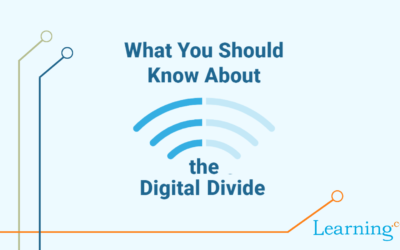In today’s interconnected world, technology is becoming an increasingly integral part of children’s lives, offering countless opportunities for learning, communication and entertainment. However, this digital age also brings significant challenges, including the growing issue of cyberbullying. Cyberbullying—using electronic communication to bully or harass others—can occur across various platforms, from social media to texting and gaming environments. For K-12 students, the impact can be significant, affecting their mental health, academic success and personal relationships.
To effectively combat this issue, children should be taught to recognize cyberbullying, understand how to handle it safely and feel empowered to seek help. At the same time, parents, teachers and caregivers must take proactive roles in prevention and intervention to create supportive and safe environments for children to thrive.
How to Identify Cyberbullying
Identification is the crucial first step in addressing cyberbullying effectively. Unlike traditional bullying, which occurs in person, cyberbullying often hides behind screens, making it less visible but just as damaging. Children may not always recognize what constitutes acceptable or unacceptable behavior online, especially when harmful behavior is disguised as jokes or casual comments. By teaching students to recognize the signs of cyberbullying—such as repeated harassment, exclusion from online groups, or the sharing of private information without consent—we empower them to act. Understanding the difference between playful teasing and harmful interactions is essential in helping children navigate the digital world safely and with confidence. Cyberbullying can take many forms, including:
- Harassment: Repeated and unwanted messages or comments intended to intimidate or hurt someone. Harassment often involves a sustained effort to demean or frighten the target, such as sending abusive messages, threats or derogatory comments. This behavior can leave victims feeling powerless or unsafe, especially when it occurs across multiple platforms.
- Exclusion: Deliberately excluding someone from online groups, chats or activities. Exclusion can be subtle but deeply harmful, such as not inviting someone to participate in a group chat or gaming session. Over time, it can lead to feelings of isolation, rejection and diminished self-esteem, especially when the exclusion is intentional and widely known.
- Impersonation: Creating fake accounts to damage someone’s reputation or relationships. Impersonation involves pretending to be someone else to post offensive content, send inappropriate messages, or spread false information. This form of cyberbullying not only harms the victim’s relationships but can also create long-lasting damage to their reputation.
- Outing: Sharing private information or secrets publicly without consent. Outing occurs when someone shares sensitive or embarrassing details about a person online, often to humiliate or shame them. This betrayal of trust can lead to significant emotional distress and make the victim feel exposed or vulnerable.
- Cyberstalking: Persistent and invasive messaging that causes fear or distress. Cyberstalking goes beyond typical harassment, involving obsessive and intrusive behavior that may include tracking a person’s online activity or sending threatening messages. This relentless pursuit can make victims feel constantly monitored and afraid for their safety.
Teaching Students to Recognize Cyberbullying
Helping students recognize cyberbullying is not only about identifying harmful behavior but also about fostering their awareness of their right—and the rights of others—to respect and safety in digital spaces. For many children, cyberbullying has become so prolific that they may view it as an unavoidable aspect of being online, normalizing disrespectful behavior and lowering their expectations of online interactions. This normalization can make it difficult for students to distinguish between what is acceptable and what is harmful. Teaching students to recognize cyberbullying involves reframing their understanding of online behavior, emphasizing that kindness and respect should be the standard, and empowering them to demand better from their digital environments. By equipping students with this perspective, we give them the tools to identify and confront cyberbullying with confidence.
To help students recognize cyberbullying, educators and caregivers can:
1. Define and Discuss Cyberbullying
Start by providing a clear definition of cyberbullying, emphasizing its repetitive and intentional nature. Use age-appropriate language and examples to illustrate behaviors that qualify as cyberbullying, such as persistent teasing that feels hurtful, sharing personal information without consent or excluding someone from online activities. Highlight that even actions meant as jokes can be hurtful if they embarrass or isolate someone.
For younger children, interactive lessons or story-based scenarios can make the concept more relatable. For older students, incorporating real-life cases or examples from popular media can make the lessons more relevant. Reinforce the idea that all students have the right to feel safe and respected online and that recognizing harmful behavior is the first step toward addressing it.
2. Help Students Reflect on Their Experiences
Encourage children to reflect on their own online interactions, both as participants and observers. Ask questions like:
- “Have you ever seen someone being treated unfairly online? How did it make you feel?”
- “Have you ever been in a situation where something made you uncomfortable or upset online?”
Creating a safe and nonjudgmental space for these conversations helps students recognize their feelings and begin to see patterns of behavior that might constitute bullying. It also allows them to empathize with others who may be experiencing similar situations.
3. Teach Them to Identify Patterns of Harm
Cyberbullying often involves repeated or systemic harm rather than isolated incidents. Help students understand that while one unkind comment might not constitute bullying, repeated harassment or targeting does. Discuss patterns like:
- Receiving frequent mean comments from the same person or group.
- Being consistently excluded or left out in digital spaces.
- Seeing someone share private or embarrassing information about others multiple times.
Use relatable analogies, such as comparing cyberbullying to a recurring problem in a friendship or group dynamic, to help students grasp the concept of harmful patterns.
4. Teach Empathy Through Role-Playing
Role-playing is a powerful tool for helping students recognize the emotional impact of cyberbullying. Create scenarios where students can take on different roles—such as the bully, the victim and the bystander—and reflect on how their words and actions affect others.
For younger students, you can use puppets or characters to act out these scenarios, while older students may prefer open discussions or group activities. Encourage them to think about questions like:
- “How would you feel if this happened to you?”
- “What could you do to support someone being bullied?”
Building empathy helps students not only recognize cyberbullying but also understand its consequences and develop a stronger commitment to stopping it.
5. Differentiate Between Teasing, Conflict and Bullying
Teasing and conflict are a normal part of social interactions but differ significantly from bullying, which is intentional, repetitive and involves an imbalance of power. Teach students to ask themselves questions to differentiate these behaviors:
- “Is this person trying to make me laugh, or are they trying to hurt me?”
- “Does this keep happening, even after I asked them to stop?”
- “Do I feel powerless to make it stop?”
By helping students understand these distinctions, you equip them to assess their situations accurately and respond appropriately.
6. Encourage Students to Speak Up
One of the biggest barriers to addressing cyberbullying is silence. Many students are hesitant to report cyberbullying because they fear retaliation, being labeled a tattletale or not being taken seriously. Reinforce the idea that speaking up about bullying is an act of courage and self-respect.
Provide clear examples of trusted adults they can approach, such as parents, teachers or school counselors, and reassure them that they will not face judgment or punishment for seeking help. Teach them how to document evidence, such as taking screenshots, to make their reports more effective.
7. Incorporate Digital Literacy and Citizenship Lessons
Understanding cyberbullying is part of a broader framework of digital literacy and digital citizenship. Teach students to:
- Reflect on their online behavior and ensure they treat others with kindness.
- Recognize the permanence of online actions and how hurtful words can leave lasting scars.
- Understand that standing up against bullying, even as a bystander, is a critical part of building respectful online communities.
Programs like Learning.com’s EasyTech offer lesson plans and activities that align with state standards and are tailored to different grade levels.
Recognizing Cyberbullying Empowers Action
Teaching students to recognize cyberbullying is a critical step toward creating safer digital spaces. By providing clear definitions, fostering empathy and encouraging open dialogue, we empower students to identify harmful behavior and take steps to address it. This foundation not only helps children protect themselves but also contributes to a broader culture of respect and kindness in online environments.
Cyberbullying is a complex issue that requires a united front. By teaching K-12 students to identify and handle cyberbullying, parents, teachers and caregivers can empower children to navigate the digital world with confidence and resilience.
Explore Learning.com’s Online Safety, Cyberbullying and Digital Citizenship Program
Empower your students to become responsible digital citizens with Learning.com’s EasyTech—a high-impact, out-of-the-box solution designed to make teaching about cyberbullying and digital citizenship both effective and engaging. EasyTech offers comprehensive, standards-aligned lessons that equip students with the knowledge and skills to navigate the digital world safely and respectfully. With interactive activities, real-world scenarios and age-appropriate content, EasyTech simplifies the process of instilling essential online safety principles while fostering a culture of empathy and accountability. Explore EasyTech today and take the first step toward creating a safer, more respectful online environment for your students.

Learning.com Team
Staff Writers
Founded in 1999, Learning.com provides educators with solutions to prepare their students with critical digital skills. Our web-based curriculum for grades K-12 engages students as they learn keyboarding, online safety, applied productivity tools, computational thinking, coding and more.
Further Reading
Online Safety Definition & Basics
In today’s digital age where students are more connected than ever, online safety has become an important part of digital literacy education. With...
A Crash Course in Digital Footprints: Teaching K-12 Students the Importance of Online Contributions & Interactions
In today's interconnected world, every click, post and search we make online contributes to our digital footprint, a complex and often permanent...
Digital Divide Statistics: The 4 Digital Divides Affecting Students
Flashback to the mid-1990s: Vanilla Ice released “Ice Ice Baby;” Ross and Rachel were on a break; and Google, Amazon, and Hotmail (RIP) graced the...




